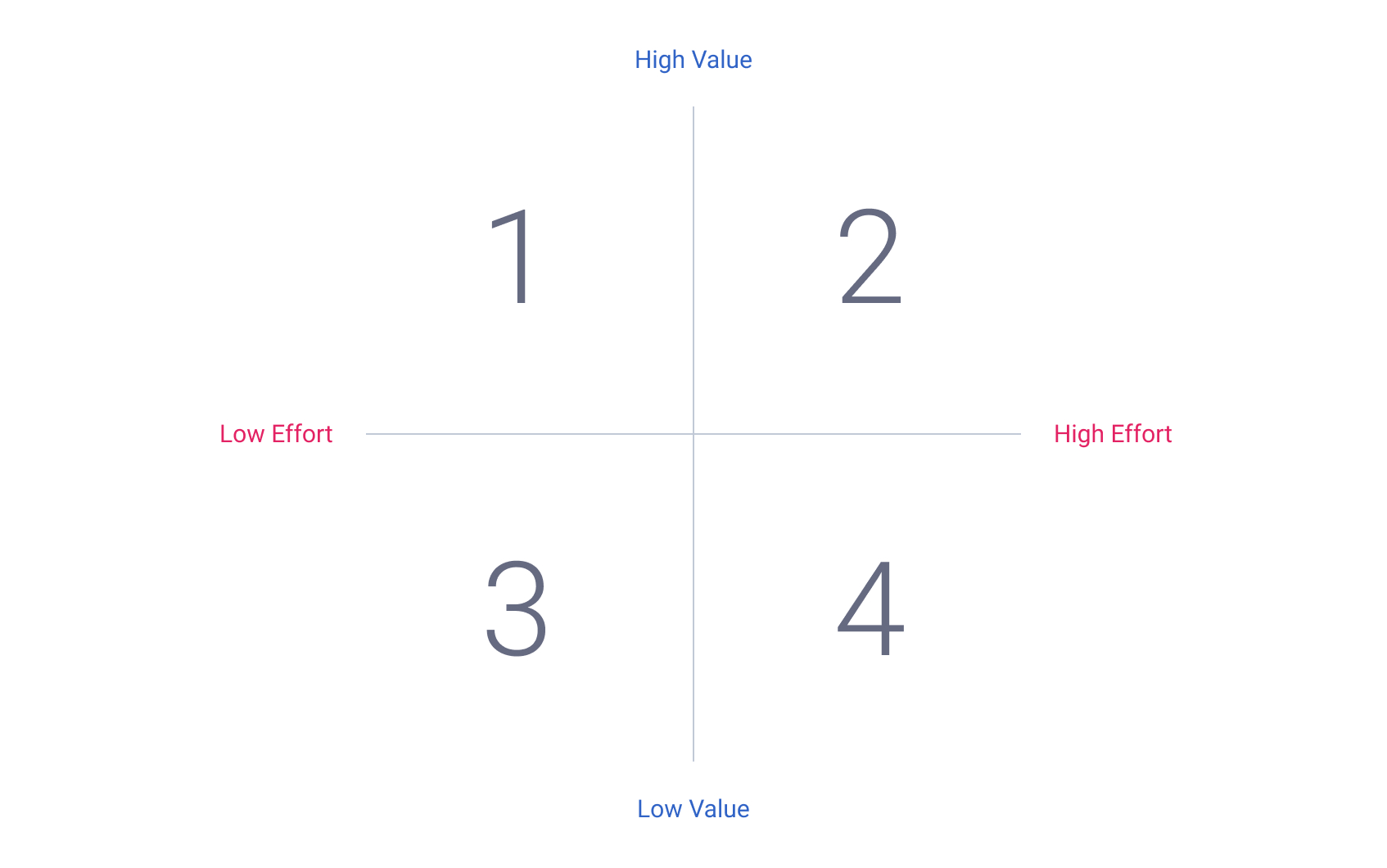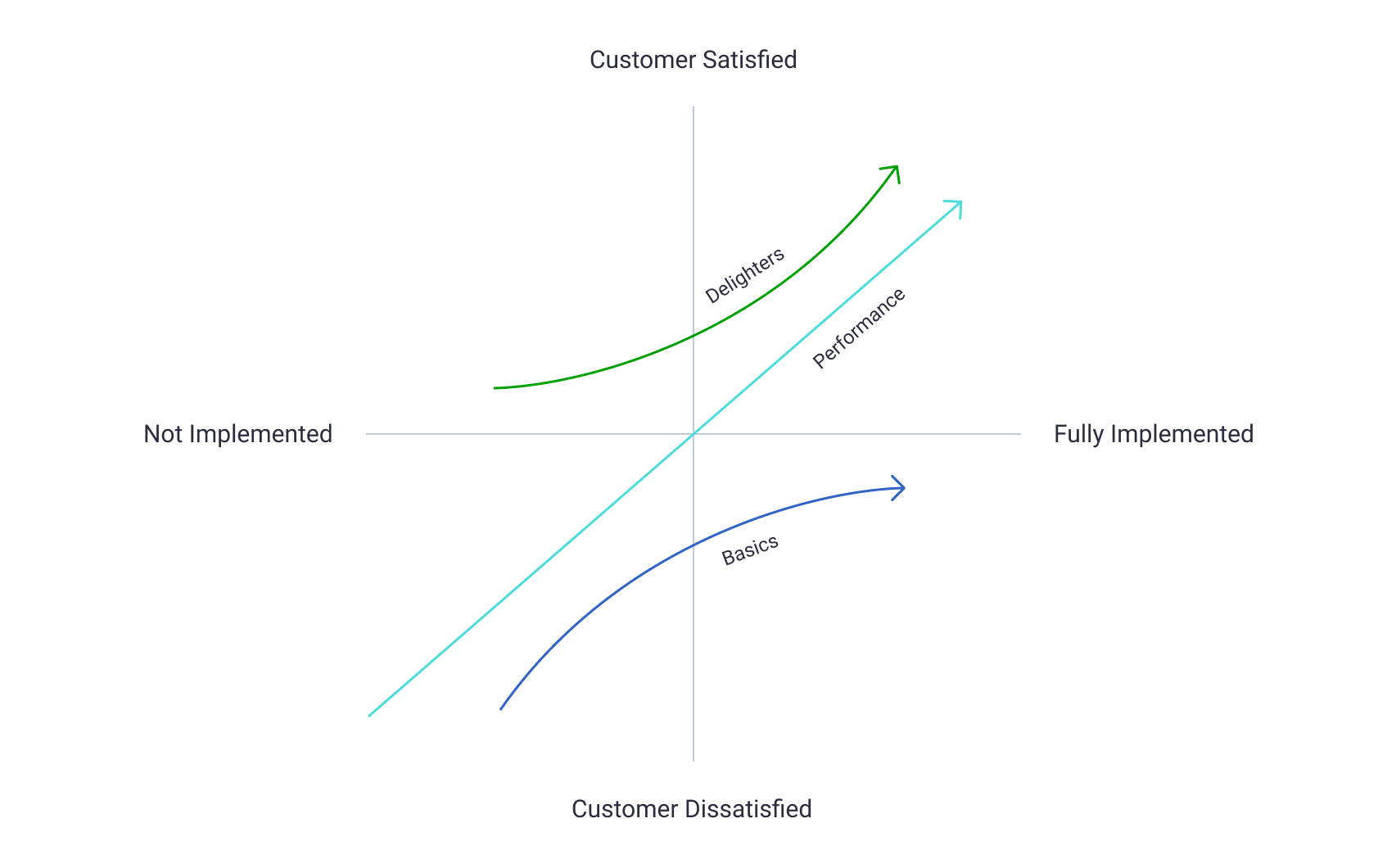When you gain a new project to work on, you immediately start processing the existing information and painting a picture of the expected outcome. To reach an optimal result, a product manager faces the challenge of prioritization. Which tasks should be fulfilled first? How to allocate the available resources and distribute tasks in the most efficient manner? Which features should be implemented first, and which may be postponed and introduced later? Such an approach of project planning requires time, effort and solid knowledge of the techniques applied for prioritization. There exists a wide range of prioritization frameworks used by custom software development companies, that are of great help for the planning process. In the article we will shed light on RICE, Value vs Effort, Kano and MoSCoW techniques and figure out the pros and cons of each described point.
Why Use Prioritization Frameworks?
The initial stages of any software project presuppose a plethora of discussions with stakeholders.It goes without saying that each participant may have his or her own standpoint regarding features prioritization, and finding a common denominator may be a real challenge. But nevertheless, in order to build an ideal product that would meet all the requirements it is necessary to abstract the personal preferences and think about the potential users and their feedback. So, selection of an appropriate prioritization framework will help you to better assess the potential of your product and not to stumble on the decision deadlock. But how to choose the right framework that will definitely work in your particular case? Below are descriptions of the most common prioritization frameworks with their strong and weak points, which will be of great help when decision time comes.
Read Also Top List of Mistakes to Avoid During MVP Development
Product Prioritization Frameworks
RICE
RICE model is an effective scoring system which allows to consider the potential features from the standpoint of such factors as: Reach, Impact, Confidence and Effort. Identification of these indicators will help you to understand which features should be implemented most urgently, and which may wait. Below you can see the formula, which can help you to assess your project idea in general:

- Reach
The first factor of the RICE prioritization framework shows the level of audience reach. It is used for estimation of the amount of people using the feature, and the impact it will have on them during a certain period of time. Simple example: the amount of customers for the current quarter. - Impact
Impact factor indicates the level of contribution to the product by the feature. This factor is pretty difficult to measure, since it’s evaluated in different ways (depending on the product). Let’s consider the scale from 3 to 0.25, where 3 is the highest level of impact per quarter, and 0.25 is the lowest. For example, the highest level may be assigned to a feature if:
1) Its implementation attracts new users without losing the existing ones
2) It provides the competitive edge
3) Conversion rate increased significantly - Confidence
You may be absolutely assured in the fact that the feature will have a massive impact, but if you do not have any data confirming it, Confidence factor will help you to keep the situation under control. Here are some examples of the indicator’s implementation which is measured in percentages:
1) A product manager has data for defining the feature impact level, and also estimation of required effort. In this case the project deserves a 100% confidence rate
2) A product manager has concrete data regarding the audience reach and estimation of required effort, but is not sure about the impact factor. Therefore the project will have an 80% confidence rate
3) There is a risk that the data considering the audience reach and impact may turn out to be lower than initially expected. Effort, in contract, may be higher. Accordingly, the confidence rate of this project will be 50% - Effort
Effort factor is measured in “person-months” and reflects the amount of work a team member is able to do during one month. Several examples are below:
1) A project requires 2 person-months if planning activities will take a week, design development requires 2 weeks, and 3 weeks for the development process
2) It’s necessary to dedicate 1 person-month to a project if one week is provided for planning, and the development process takes about 2 weeks with no design required
But you should keep in mind that the RICE approach is not a panacea and the appropriateness of its usage depends on the project. Among its advantages we can name convenient project ranking, and possibility of the informed and impartial choice. Meanwhile, the main disadvantage of this framework is that the estimations will never reach 100% accuracy.
Value vs Effort
Another pretty simple and effective approach used for prioritization. This method presupposes the use of a 2×2 matrix which facilitates decision making and determines the right direction. It consists of Value and Effort parameters, where Value indicator shows the contribution made by your product to business, and Effort indicator reveals the resources required for tasks completion.
 These parameters are applicable to any task or idea and will help you to establish priorities and choose the most important tasks to proceed with their implementation.
These parameters are applicable to any task or idea and will help you to establish priorities and choose the most important tasks to proceed with their implementation.
To determine value parameter of a particular task, it’s necessary to pay attention to the following:
- Potential revenue its implementation may bring
- How beneficial it is for the new and existing users
- What impact it will have on business and strategic goals
Regarding effort required for task completion, the following factors should be taken into consideration:
- Expenses for implementation
- Potential risks
- Level of complexity
One of the greatest advantages of the Value vs Effort approach is the simplicity of its use, and it is applicable by any type of company, regardless of the industry or a product type. It is also worth mentioning that this method will help to exclude the needless guessworks and various types of assumptions when discussing prioritization issues.
What about the pitfalls of the framework, it also is not 100% accurate. Another disadvantage is that it can hardly be applicable in large teams, where participants may have completely different opinions considering the value/effort scores, which would take a pretty long time before reaching a consensus.
Kano Model
A popular worldwide Kano framework is used for defining if users are satisfied with the product functionality. The approach allows to estimate the emotional reaction for selected characteristics and see a clear picture of the customers’ preferences: which functions are considered to be most important, and which are regarded as of very doubtful validity. Implementation of this method presupposes selecting a sample of users which would tell about their emotional condition when gaining information about the availability or absence of this or that feature. Please see the scheme below:
 In accordance with the provided scheme, the features can be classified in the following way:
In accordance with the provided scheme, the features can be classified in the following way:
- Basic Features
As a rule, it is a standard array of must-have functions, without which your product will not even be considered by users. - Performance Features
The level of your users’ satisfaction will increase as you contribute to these features improvement. - Delighted Features
This classification includes features which a user did not expect to be available, but will be happy in case they are provided.
The Kano model is an effective tool for understanding your users’ preferences. This method will help you to have a clear vision of the expectations from your product, and therefore allocate the existing resources more rationally and on the basis of the customers’ opinion.
But nevertheless, this model is also not ideal. First, users may not fully understand the essence of the offered feature. Second, in contrast to RICE and Value vs Effort approaches, it requires some time to conduct the survey, which entails additional expenses.
The MoSCoW Method
There are four prioritization categories in MoSCoW method:
- Must-have
Must-have features form the basis of the product. Without them the product will not function at all, that is why their implementation is of the highest priority.
Example: an online store must have a possibility to place products on the website. - Should-have
These functions are also important, but do not form the basis of the product.
Example: an online store should have a possibility for customers to add products to the shopping cart. - Could-have
These kinds of features are classified as not very important, but their availability will definitely increase customer satisfaction.
Example: an online store could have a possibility to compare the parameters of products of the same category. - Won’t-Have
This group includes functions which are not worth the investments of time, effort, and money at the current moment. Their implementation may be considered later.
Example: An online store would have an online map, which would allow customers to monitor the location of the courier delivering the product.
This framework is good due to its simplicity and possibility to involve stakeholders with no technical background in the prioritization process. Meanwhile there is a risk to include the features in reality belonging to Should-Have, Could-Have and Won’t-Have categories to the Must-Have section, which may lead to irrational resource allocation.
Conclusions
In the article we have considered four prioritization frameworks, outlined their specificts and pros and cons. There exist other methods which will be described in the following part, so please watch for updates.